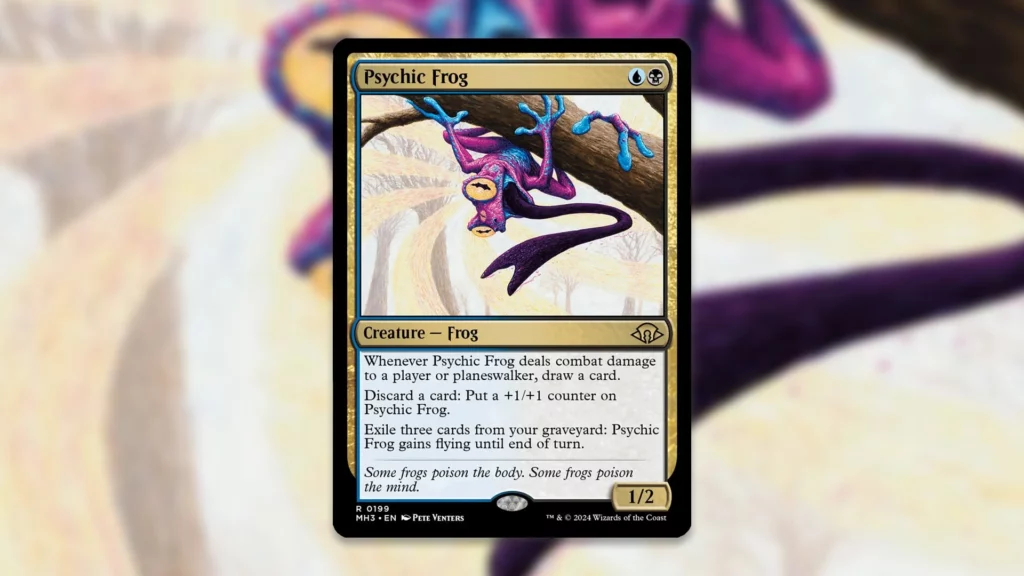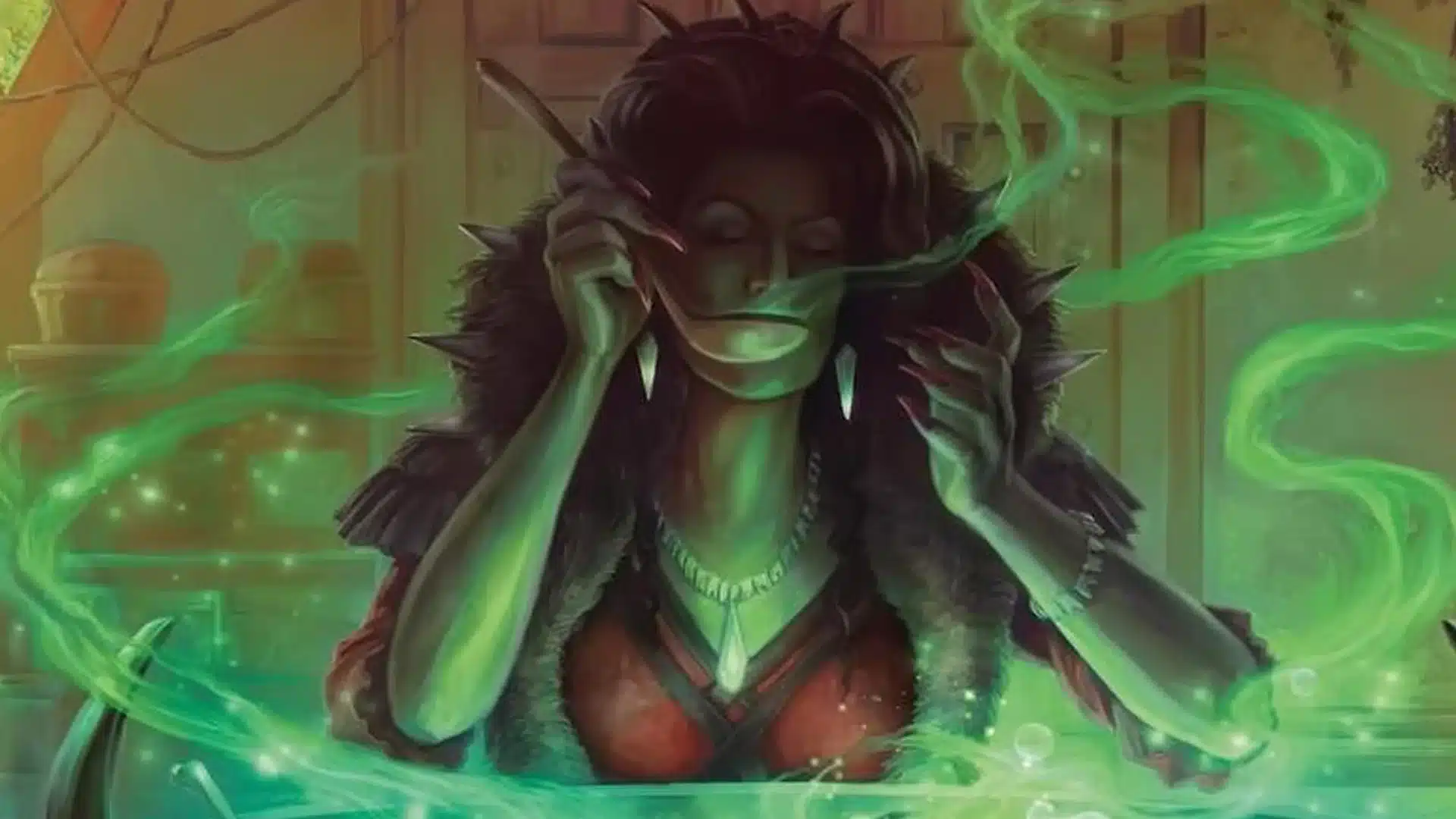Graveyard combo decks are nothing new to Modern. Being able to reanimate enormous haymakers like Atraxa, Grand Unifier can pull you really far ahead.
Typically, most Goryo’s Vengeance shells opt to play white to gain access to Solitude and Ephemerate. However, yesterday, a straight Dimir version of Goryo’s Vengeance combo made it to the finals of a Magic Online Modern Challenge with some very notable distinctions.
You won’t find any Atraxas here. Instead, this archetype is built to abuse an interaction between an elite Artifact and one of MTG’s scariest Demons. Let’s take a closer look.
Goryo’s Vengeance Meets Agatha’s Soul Cauldron

The two main bombs that this deck utilizes are Griselbrand and Ulamog, the Defiler. Griselbrand is a classic Reanimator target that largely got outclassed by Atraxa, but this deck is built to abuse Griselbrand like no other. That’s because of the power of Agatha’s Soul Cauldron.
Agatha’s Soul Cauldron has a lot of neat synergies with the cards in this deck. The number one combo, unsurprisingly, is to exile Griselbrand with Cauldron and put a +1/+1 counter on one of your other creatures. From there, you can pay seven life to draw seven cards at will! This line makes it easier to win games even when you don’t find Goryo’s Vengeance early.
As for Ulamog, the Defiler, this fatty gets most of its value out of its massive Annihilator trigger. You just need to get another big creature into exile, which Agatha’s Soul Cauldron does trivially.
If you manage to get a copy of Griselbrand or Ulamog into exile and a copy of Ulamog into your graveyard, you can use Goryo’s Vengeance or Emperor of Bones to resurrect Ulamog and give it Haste. It’ll enter with a boatload of +1/+1 counters and a single attack will reduce your opponent’s board to rubble.
Emperor of Bones plays a critical role in this archetype. In most cases, you need to go through the effort of Adapting Emperor in order to bring back a card you exiled with it and get a big attack. In this deck, though, you don’t even need to spend the mana if you have a Cauldron in play.
Emperor triggers whenever a +1/+1 counter is placed on it, regardless of whether the counter came from its Adapt ability or not. So, you can cast Emperor as a follow-up to Cauldron and exile Griselbrand or Ulamog at the beginning of combat. Then, you use Cauldron to exile any other creature from either player’s graveyard, put the +1/+1 counter on Emperor, and Griselbrand or Ulamog will come into play.
This is a nice line to have access to, as it effectively plays around Sorcery speed removal like Phlage, Titan of Fire’s Fury even when you don’t have four mana to play and Adapt Emperor on the same turn. Cauldron really adds a lot to this strategy.
Filling the Graveyard

In order to fuel Goryo’s Vengeance, Emperor, and Cauldron, you do need of ways to fill your graveyard and dig for Griselbrand and Ulamog. On top of that, you need a decent number of efficient creatures to ensure Agatha’s Soul Cauldron has places to put +1/+1 counters. Fortunately, this deck does a good job meeting both requirements.
Psychic Frog is definitely a big part of the equation. Psychic Frog draws cards, discards your big threats when applicable, and can even exile cards from your graveyard to help maximize Ulamog in the event you don’t draw Cauldron. However, there are other cheap creatures that also help fill your graveyard.
Stitcher’s Supplier and Hedron Crab, for example, both enable you to mill cards and set up some graveyard shenanigans. If you’re fortunate enough to mill Griselbrand right away, Cauldron or Goryo’s Vengeance serve as devastating turn two plays.
Even milling Psychic Frog or Abhorrent Oculus can be quite strong if you have Unearth at the ready. Unearthing Abhorrent Oculus or simply hard casting the powerful three-drop is a strong play in its own right and will sometimes serve as a backup win condition.
An Interesting Metacall

Seeing this version of Goryo’s Vengeance combo perform as well as it did is a testament to its position in the metagame. Between Cauldron, Unearth, Abhorrent Oculus, and Emperor of Bones, this deck is much more all-in on graveyard synergies than more traditional Esper Goryo’s shells are. This gives the deck a lot of powerful angles of attack, which certainly has its benefits.
That being said, it also has its risks. By sticking to straight Dimir, this version of Goryo’s combo is almost completely cold to graveyard hate cards like Leyline of the Void. Even tamer pieces of hate like Ghost Vacuum successfully mess with all of your targeted reanimation effects.
The reality is, though, dedicated graveyard hate just isn’t that prevalent right now. Most of the popular combo decks in Modern, like Belcher or Amulet Titan, don’t rely on the graveyard much. It’s a bit surprising to not see any copies of Sink into Stupor in the deck as a low-cost way to bounce a piece of graveyard hate in an emergency, but it’s hard to argue with the deck’s result.
If Dimir Goryo’s catches on, expect players to adapt. This archetype proved to be an excellent metacall in an event where players weren’t prepared, and it’s cool that such an innovative take was rewarded.
